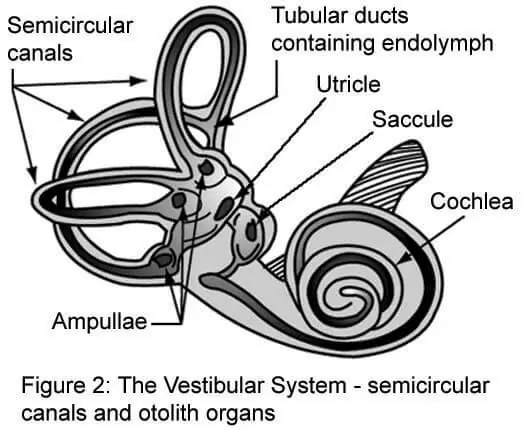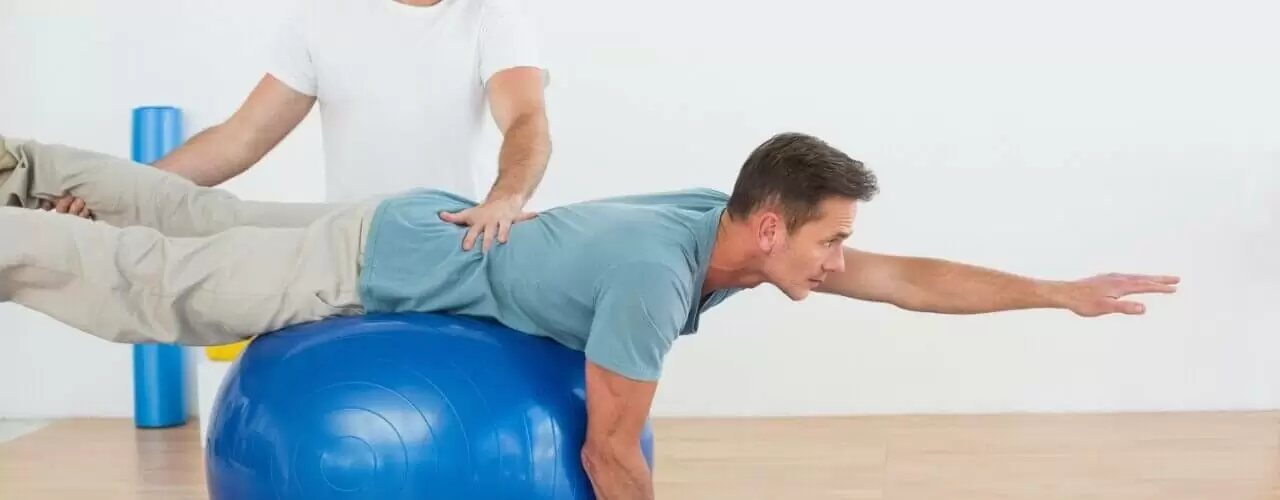You wake up as you would any other day and roll over to get out of bed when suddenly a strange feeling hits you. The whole room begins spinning around you, the bed starts moving beneath you,
BPPV occurs in the vestibular apparatus, an organ that is located in each inner ear. Although this organ has many important function for our purposes we will discuss its two main functions: (1) to determine your head’s position with respect to gravity and (2) to determine if your head is moving or accelerating. These two different functions are the responsibility of two different parts of the vestibular apparatus: the otolith organs (the utricle and saccule) and the semicircular canals. Although these two different portions of the vestibular system are both housed in this organ they have two very different functions.
The job of the otolith organs are to determine the body’s position with respect to gravity (static head tilt). This is achieved by the otoconia which are small crystals located within the utricle and saccule. The weight of these crystals allows gravity to act on them and pull them in a certain direction when the position of the head changes. The vestibular system then tells the brain the position the head is in with respect to gravity. The role of the semicircular canals is to determine movement of the head regardless of its position with respect to gravity. Acceleration is determined by fluid movement through the semi-circular canals which results in the stimulation of small hair cells. In essence, when you move your head quickly in one direction it causes fluid movement in these canals located in both ears and your brain receives a message that your head is moving in a certain direction.
When the system is acting normally, this is how the two different portions of the vestibular system work. BPPV arises when the otoconia (crystals) become dislodged from the otolith organs and make their way into the semi-circular canals. The problem with these crystals relocating to the semicircular canals is the canals become sensitive to gravity where they weren’t before. Now, any change in head position causes gravity to act upon these crystals resulting in fluid movement through the canals and hair cell stimulation. This becomes problematic as the vestibular organ on one side of the body tells the brain the head is accelerating and the organ on the other side disagrees. The brain now uses this faulty vestibular system information to control movement of the eyes and gives the eyes mixed messages which results in nystagmus or rapid movement of the eyes. This eye movement is what makes the room appear to spin. This sensation comes on rapidly as the crystals begin to move and symptoms begin to resolve as the crystals stop moving.
Now that you gained a simple understanding of the underlying cause of BPPV, you’re probably wondering how to fix it, or maybe you’ve already guessed because the answer is obvious. We simply need to get the otoconia out of the semicircular canals! We can do this in a variety of ways but the most effective way is to receive treatment from a medical practitioner including a physical therapist with a good understanding of the diagnosis of this condition. Once properly diagnosed a therapist can target the affected semi-circular canal and place a patient’s body in different positions in order to use gravity to move the crystals all the way through the canal and back out the other side. The procedure if conducted correctly can generally resolve symptoms in a few visits and can be performed quickly and easily in the physical therapy clinic.
I hope this post has been helpful for understanding why BPPV occurs and what can be done to treat this condition. I have heard patients remark they have had symptoms for years and just didn’t know what could be done and that is why I felt this was an important topic to discuss. There is a lot that can be done and symptoms can generally be resolved in a timely and effective manner. With this in mind, there are a few items of importance I want to make you aware of concerning this condition. Proper diagnosis is extremely important as dizziness and vertigo can also be symptoms associated with stroke. If you are or someone you know is displaying these symptoms please be sure there are no other signs or symptoms of stroke including weakness or numbness in the arms, legs, or face as well as difficulty speaking or swallowing. Second, as symptoms can cause significant imbalance those experiencing symptoms need to take extra care to prevent injuries due to falling. Thank you for reading and if you have further questions please feel free to contact us!
Tags: Diagnosis, Patient Care, Dizziness, Vertigo





